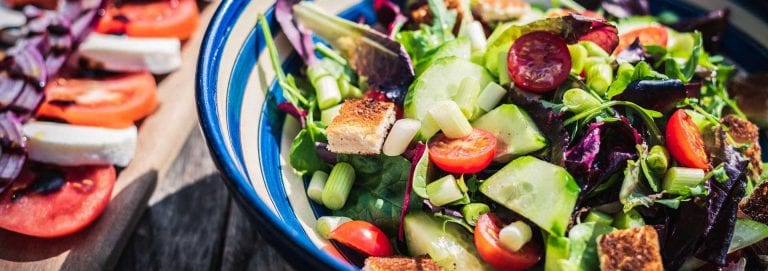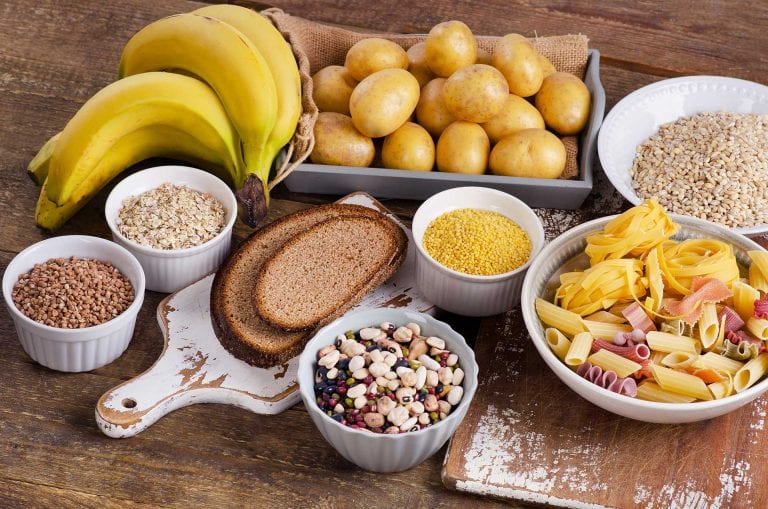We all know Fibre “keeps us regular”, but it does far more than that and we should all be eating more.
The government’s National Diet and Nutrition Survey shows less than one in twelve men and only 4 per cent of women (less than one in twenty) consume the recommended amount of fibre every day. That’s worrying stuff considering fibre can make us healthier, as well as help manage weight.
What is it?
Fibre is all the indigestible parts of plant foods like vegetables, fruit and grains that our digestive system can’t break down. The two main types – insoluble fibre and soluble fibre – have slightly different roles in the body. Most foods with fibre in contain some of both types, but often, a food will be richer in one type than the other:
Rich in soluble fibre: Oats and oat bran, flax seeds, pearl barley, fruits and vegetables, nuts, beans, pulses, soya, Quorn and lentils.
Rich in insoluble fibre: Wholemeal bread, wholewheat pasta, brown rice and wholegrain breakfast cereals, nuts, seeds and the skin of some fruit and vegetables.
Health benefits
Everyone knows that fibre keeps us regular, but making sure you get enough also reduces the risk of bowel conditions.
Insoluble fibre has the biggest effect on promoting regularity and helping waste to transit more quickly. A big bonus of having a faster transit time (i.e. from when you eat, to when you need to go to the toilet) is that any toxins in the waste don’t hang around as long.
Soluble fibre is less bulky but swells to form a gel-like substance in the gut that also helps promote regularity. Due to its gloopy, viscous nature, soluble fibre is also able to slow the absorption of sugars into the blood stream, which can benefit you by giving gentler rises in blood sugar after eating, in turn helping to reduce the risk of developing type 2 diabetes.
Research has also associated higher fibre diets with better heart health, which may be because soluble fibre can also bind to artery-clogging cholesterol in the gut, preventing it from being absorbed.
Waistline benefits
Fibrous foods are your weight loss friend as they require more chewing, making a meal last longer and more likely to satisfy you. In addition, fibre tends to make food less “energy dense,” with fewer calories in a given volume. And as an extra bonus, fibre-rich whole grain foods also have more important minerals like iron and zinc than the refined “white” versions.
Substances produced by friendly gut bacteria that use soluble fibre as a food source may also help in regulating weight . It’s an exciting new area of research that scientists still don’t understand fully. However one theory is that when bowel bacteria have plenty of soluble fibre to feed on they produce beneficial fats that may have an effect on hormones that curb hunger.
Top tips for getting more fibre
To get the full benefits of fibre, the UK Scientific Advisory Committee on Nutrition recently recommended that we should all be getting 30 grams of fibre a day. Currently though, our average intake is only around 18g a day (20.7g a day in men and 17.4g day in women).
Getting 30g of fibre a day isn’t always easy but these tips will make it easier to sneak in more:
• Don’t peel your veg – often the skin is where the fibre is concentrated.
• Have a meat free day – switching meat for vegetables or Quorn will increase your fibre (or make sure a quarter of your plate is whole grains if you don’t want to do the veggie option).
• Add some calorie-free sweetness – whole grain breakfasts can be a little uninspiring but a sprinkle of Canderel can help make them more appetising.
• Swap crisps for nuts – as well as being nutritious they are a great easy source of fibre.
A sample high fibre day
Here’s just one example of the fibre-containing foods you could eat over a day to get your optimum 30 grams.
At breakfast: Two thick slices of wholemeal toasted bread (or 2 Shredded Wheat) and a banana. Sprinkle some calorie-free sweetener to add a delicious sweet taste with none of the calories.
At lunch: A baked jacket potato with the skin on (2.6g); half a can of baked beans –preferably no added sugar option.
At dinner: Vegetable curry with wholegrain rice. Make sure you replace any sugar used in your recipe with calorie-free sweeteners for a lower calorie intake.
To snack on: A small handful of nuts and an apple.
Getting enough fibre may seem a tall order, but any increase is an improvement, so start eating more today to reap the benefits.









